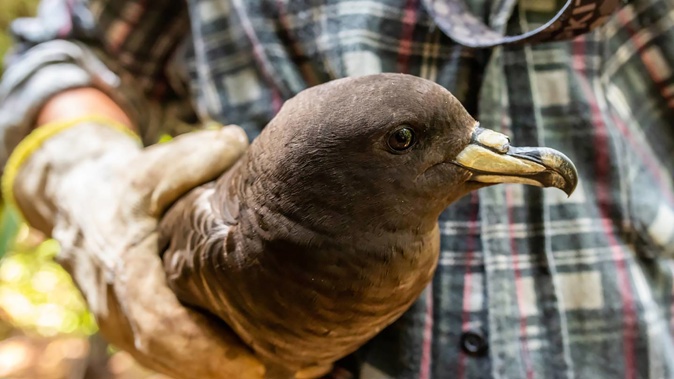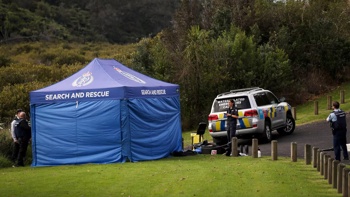
A Wellington data science company has developed a new tool that can spot black petrels caught in fishing lines 30 times faster than humans.
Dragonfly Data Science’s new technology is believed to be the first time machine learning has been used to identify protected species captured by fishing vessels.
Black petrels (tākoketai) are endemic to New Zealand and classed as “nationally vulnerable”, meaning they are at high risk of extinction. They are also one of the highest-risk species from commercial fishing, often diving for fishing bait as it is lowered into the ocean. If they get hooked, they are pulled under the water and drown.
Department of Conservation principal science adviser Graeme Taylor said the fisheries risk in New Zealand to black petrels has reduced over the past 10-20 years after several mitigation measures were implemented. This includes bird scaring lines, night setting and weighting lines so they sink to a depth birds cannot see them.
“The birds gather behind vessels to grab the baits that are used on hooks for a variety of target fish species,” Taylor said.
“While natural prey such as squid, krill and small fish are available, the birds are looking for an easy meal.”
Eight black petrel captures have been reported by commercial fishing operators this year, according to Fisheries NZ. Four were dead and four were released uninjured. The birds can survive getting caught if they go for left-over bait as the line is pulled into the boat.
In 2015, a monitoring trial was established to determine whether video footage could detect dead birds captured on long-line fishing hooks. Dragonfly Data Science reviewed video footage from 2019 and 2020 and developed a machine-learning algorithm that could scan footage and identify captured black petrels.
/cloudfront-ap-southeast-2.images.arcpublishing.com/nzme/PHD5P5VWRRFPHO7FCO5ZPXKOXU.jpg)
A fake seabird being used on a vessel to train the algorithm. Photo / Pisces Research
The tool is roughly as effective as human reviewers, spotting around 85 per cent of seabird captures, but significantly faster. The tool works by scanning one minute of footage every second – 30 times faster than human reviewers – and drawing a box around the detected petrels.
Dragonfly data scientist Henry Zwart said the tool was still in the research and development phase and functioned best in addition to human reviewers to “boost the results”, but it could replace human reviewers in the future.
“These are very rare events and the footage is collected in a very harsh environment. You’re often dealing with sunstroke on the water and sea spray and salt and fog clogging up the lens. Petrel captures only [happen] over a couple of seconds usually, blink and you miss it.
“The fact that we’ve managed to achieve relatively strong results despite that is promising.”
/cloudfront-ap-southeast-2.images.arcpublishing.com/nzme/KE5IS22MRBGDDDD5HIPLLHP4ZE.jpeg)
Henry Zwart, a data scientist with Dragonfly Data Science, talks about a new AI tool being used to detect black petrels caught in fishing hauls. Photo / Dragonfly Data Science
Findings from the 2017 monitoring programme have been used to guide the latest government efforts to record commercial fishing activities. Cameras are being installed on around 300 vessels to provide independent and accurate information about fishing activities.
Last year Stuff reported that three industry bodies had made submissions to Fisheries NZ regarding the camera roll out. The groups were supportive of the initiative but believed a better strategy that included artificial intelligence to review the hours of footage set to be produced was needed.
Seafood NZ chief executive Dr Jeremy Helson said the fishing industry was largely supportive of cameras on boats, however there were some concerns around privacy, being filmed in the workplace and who will get access to the footage.
“By and large, the industry understands that they can provide very useful information and they can provide the public with some understanding or confidence that the industry is acting responsibly.”
Wildlife Management International managing director Biz Bell has been monitoring black petrels on Aotea/Great Barrier Island for 28 years on behalf of the Department of Conservation and iwi Ngāti Rehua. The large seabirds – with wingspans of up to a metre and weighing up to 1kg when breeding – nest in burrows in the forest at the top of Hirakimatā/Mt Hobson.
“Most people are super surprised to find out there is a seabird on the mountain. Visiting the colony often three times every breeding season is the highlight of my year – these birds capture your heart,” says Bell.
“Everything we learn can help to protect and enhance the population.”
Take your Radio, Podcasts and Music with you









